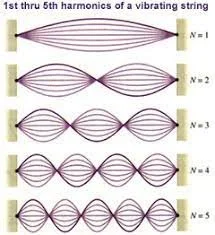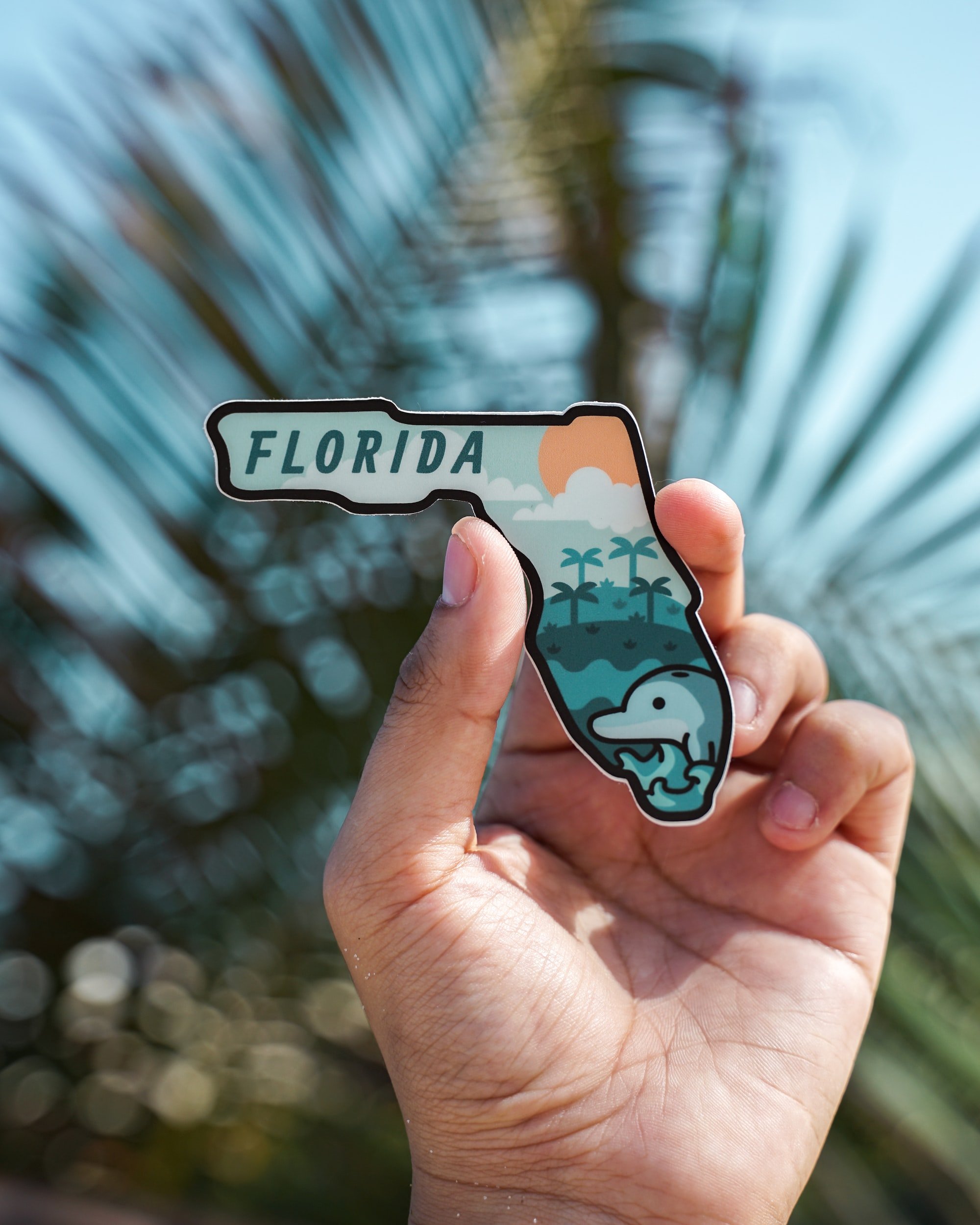Welcome to the Connection
NASAP’s Online Newsletter
November 2022 Issue
President’s Address
Greetings from the NASAP President,
In the U.S.A., November is a month of gratitude and reflecting on history to honor the land and the original owners of this land. I am writing gratitude to our members for doing big and small things daily to make a difference.
In mid-October NASAP Council of Representatives had its hybrid meeting, some of us were in Denver, and some joined via zoom from their homes around the world. It was two days full of review of materials, sharing, problem-solving, brainstorming, and dreaming together. I appreciate all our leaders and members sharing their time, energy, and ideas with NASAP!
We discussed and brainstormed the following ideas.
Members, please reach out to me via email if you have ideas (or concerns) on any of these topics:
2023 Conference discussion, ideas for sessions, activities, fun, engagement
Virtual conference ideas and planning
Creative and alternative solutions for future conferences
Revenue diversification
In honor of our Native elders this month, I would like to share a documentary I watched a couple of years ago, One Word Sawalmem. It is about water and our relationship with the earth through the eyes of Native wisdom keepers. A quote from this documentary stuck out for me, and since then, I remind myself when I feel discouraged or lost:
“What’s one word from your sacred language that changed your life and that you can offer to the next generation as medicine to heal our relationship with the Earth?”
So, I am asking members of NASAP, “What’s one word/concept from Individual Psychology that changed your life and that you can offer to the next generation of professionals to change our relationship with one another, with the World, with Earth?”
My goal as the president is to make these life-changing ideas of Individual Psychology accessible to many people outside of our circles. My goal is to continue to share our Adlerian “medicine” for healing with the new generation of professionals to continue to grow…
Reach out to me via email:
Bengu.tekinalp@drake.edu or president@alfredadler.org
Bengü Ergüner-Tekinalp
Letter from the Interim Editor
Dear Readers,
Welcome to winter. As we round the bend toward a new year, we want to tell you about lots of exciting things happening at the organization level of NASAP. We hope to give you summaries of what happened at the Council of Representatives meeting in Denver soon.
We are back on track with our regular columns, welcoming the beloved Lois Marecek back with her warm fuzzies.
We want you to become a regular columnist too.
Share how Adlerian thought is impacting your everyday life in work and relationships. Nothing too fancy about it. If you left, come back, we miss you. We can do better. Life can be messy, we just clean it up the best we can. This is how we grow from our mistakes. I’ve learned a lot from mistakes I’ve made within NASAP, and I’ve had a lot of fun too. I’ve met people I hope I know for a long time. As long as some of our seasoned members have known one another.
The Connection is just that- one space where Adlerians teach new & prospective members about Adlerian psychology, in an everyday way. It’s also a space where we engage current members and stay in touch with each other between conferences. We hope you will join in the social interest and write something for us about your corner of the world. Now that we are coming out of hiding, let’s try to connect again. Let’s clean things up (again).
You matter to us. You belong here.
Jess Minckley
Interim Newsletter Editor, among other titles
Wellness for Life
by Lois Marecek
Take a break: Take time out
With a title like this, some of you may be querying, “What is she up to now?” Got to admit, it did get your attention. At this point, you may be experiencing a trigger associated with ‘time out’ — especially if you are a parent. For all the non parents, let me take a moment to illuminate you. When a young person makes a poor choice and or needs time to get their emotions under control, the action taken is called ‘a time out’ usually in their bedroom. Here she / he can regain calmness — self-control before the parent addresses the action / behavior of the young one. It establishes a way to decrease misbehaviors. It also benefits the parent to enact by addressing the action / behavior rather than from reacting via emotions.
If we’ve learned anything from this, no matter the age, it is a way of positive re-centering / focussing. We have, and in all instances, continue to be imprinted upon by life. This includes events both reactively past, as well as ongoing. It appears that some more than others have been impacted / bombarded by COVID; the frustration resulting from the rise of food, gas; the new or somewhat uncharted challenges of the job; and or a place to live. Thus leading us down the road of anxiety, sadness, frustration and even depression. In any case, it leaves its mark. It’s enough for anyone to feel ‘wonkie’!
Now that I have your attention, it’s time to take a break, a break of self-care. It could be said, “Self-care is a necessity of life which keeps us functioning well.” The questions now are, “What to do about it? How?” At this point, it appears that our resolve and probably our faith is being tested. Here are a few practices you may consider being part of your routine.
Start of the Day:
Shower Stretch
Walk / Exercise
Listen to Music
Drink Green Tea
Eat Balanced Breakfast
Journaling
Managing Stress Better:
Make a Plan
Do Something Physical
Shake It Out
Imagery (Visualize your favorite place)
Breathing (Yoga/Lamaze)
Brain Gym
Daily Doses of Laughter
There have been a number of studies centering on chewing since it relates to mental health benefits. It gives jaw muscles encouragement which is very soothing and calming. With this in mind, what benefit can result from biting a pencil? Physically it puts the jaw into a more comfortable position– a smile, thus hopefully, tricking the brain into thinking you’re happy!
I saved the best for last. My ninth grade algebra teacher, Doreen Hall, was not only an excellent teacher, she would also share her wisdom with us. She shared this before our state exams. “You may be on a raft in still waters at the moment. However, the wind will eventually come and guide you where you need to go.”
Regarding the wind, William Ward once said “The pessimist complains about the wind, the optimist expects it to change, and the realist adjusts the sails”. Lastly, I discovered watching local news that dogs have receptors that can sense human stress and anxiety. 9/29/22 KVOA . An additional resource: Your Dog Knows You’re Upset, and Wants to Help. Thinking about it, there’s a ‘Two-fer’ perk– a Win-Win– decreasing your negative emotions and companionship!
I can’t help but wonder what words of wisdom Rudolf Dreikurs might have bestowed? “Security comes from a feeling of being able to deal effectively with anything life may have to offer.” (uncited)
Well, it seems like we are at the point where you can switch on some of these tips. Until next time, stay well and hydrated.
Warm Fuzzies,
Lois Marecek
Shakespeare à la Adler
Shakespeare’s Sonnet #8 – An Allegory for Adler’s Gemeinschaftsgefühl
by Christopher Eriksson
Music to hear, why hear’st thou music sadly?
“Sweets with sweets war not, joy delights in joy:
Why lov’st thou that which thou receiv’st not gladly,
Or else receiv’st with pleasure thine annoy?
If the true concord of well-tuned sounds,
By unions married, do offend thine ear,
They do but sweetly chide thee, who confounds
In singleness the parts that thou shouldst bear.
Mark how one string, sweet husband to another,
Strikes each in each by mutual ordering;
Resembling sire and child and happy mother,
Who, all in one, one pleasing note do sing:
Whose speechless song being many, seeming one,
Sings this to thee: ‘Thou single wilt prove none.”
Shakespeare’s Sonnet #8 speaks of “how one string, sweet husband to another, strikes each in each by mutual ordering, resembling sire and child and happy mother, who all in all one pleasing note do sing…”
Considering Shakespeare’s profound knowledge and recognized use of allegory and figurative language to explain complex subjects, this sonnet openly refers to the family of musical harmonics that make a note rich, as illustrated above; knowledge of which goes back to Pythagoras.
Goethe, like Adler, was an avid reader of Shakespeare’s works, writing:
“Shakespeare is rich in wonderful allegories which arise from personified concepts, and would not suit us at all, but for him are entirely in place, because in his time all art was dominated by allegory”. (Goethe, 2006, 759; Bloom, 1994, 190-219).
To a modern Adlerian, this sonnet is an allegory of the benefits that come from developing a feeling of family, a feeling of being connected to others and having our place in life. This comes about through taking an active, heart-felt interest in the interests of others. Our life becomes richer, just as a note played on a given musical instrument sounds richer because it includes and sounds out lots of its own family members, its own harmonics.
Sonnet 8 opens by implying that we humans like showing that nothing can get to us, that we are strong and imperturbable. The sonnet says that when sweet musical harmony does not make us happy, but rather jars our ears to generate discord in us, the correction is ours to make. The metaphor of musical harmonics in a single note as a happy family tells us that when we extend ourselves to others to broaden who we are, which may be demanding, we will prove ourselves because we are connected. But if we lack a feeling of family and community, “we single” will prove nothing of life’s harmony and family, since not being honest with ourselves through hiding our true feelings, we will not be connected, we will not be in tune with nature and others.
The same message appears in Shakespeare’s Merchant of Venice (Act 5, Scene 1, 83-88):
“The man that hath no music in himself,
Nor is not moved with concord of sweet sounds,
Is fit for treasons, stratagems and spoils;
The motions of his spirit are dull as night
And his affections dark as Erebus:
Let no such man be trusted. Mark the music”
References
Ansbacher, H.L. (1968). The concept of social interest. Journal of Individual Psychology, 24, 131-149
Bloom, H. (1994). The Western Canon. New York, NY: Riverhead Books.
Eriksson, C. (2017). Music Therapy and Community Feeling. Journal of Individual Psychology. 73(3). 243-264.
Goethe, W.J. (2006), Maximen und Reflexionen, ed. G.-L. Fink, G. Baumann, and J. John, in Sämtliche Werke nach Epochen seines Schaffens. Münchner Ausgabe, vol. 17, Munich, btb.
Shakespeare’s Sonnets. https://shakespeares-sonnets.com/. Accessed October 25, 2022.
Shakespeare, William. The Oxford Shakespeare: The Complete Works. Editors Stanley Wells.
Florida Adlerian Society
FSAP Call For Proposals
27th Annual Conference
March 3rd and 4th, 2023
at Safety Harbor Resort and Spa
CEs for Reading Adlerian Content
Learn @ home
You can receive CE credit from the NASAP continuing education project by reading these articles and completing a quiz.
Cotterill, B. (2022). The relationship between psychological birth-order position and personality type. Journal of Individual Psychology, 78 (2), 238-256. [3,800 words, 0.6 CE hr., $21]
Mansager, E., & Garrison, R. (2022). Harnessing Adler's Healing Process. The Journal of Individual Psychology, 78(2), 203-220. [6,600 words, 1.1 CE hrs., $38.50]
Jokinen, R., & Hartshorne, T. (2022). Anxiety disorders: A biopsychosocial model and an Adlerian approach for conceptualization and treatment. Journal of Individual Psychology, 78(2), 155-174. [7,400 words, 1.25 CE hrs, $43.75]
Hoffman, E. & Bluvshtein, M. (2022). Promoting Adlerian Psychology in the American classroom: The first attempt and its contemporary implications. Journal of Individual Psychology, 78 (2), 175-188. [3,000 words, 0.5 CE hrs., $17.50]
For more information and a list of all articles that are available for CE credit, go to https://nasapce.didacte.com and open the course “AAA Start Here” or contact Rocky Garrison at rockygarrison@gmail.com.
An EST for IP: Behavioral Activation
Rocky Garrison, Ph.D.
Behavioral activation (BA) is a manualized (Dimidjian, et al., 2021; Lejuez, et al., 2011), structured, and idiographic treatment process that can be used for increasing adaptive, high Gemeinschaftsgefuhl (GSG) behaviors, decreasing low GSG behaviors, and adopting a more horizontal line of movement. It was originally designed to increase pleasant events in the lives of depressed clients but has been applied to a variety of clients and behaviors. It is an empirically supported treatment that echoes Adler’s (2013/1930) formulation of psychotherapy as meant “… to develop behavior on the useful side and to establish in general a useful attitude towards life and society" (p. 40). It should be considered as an intervention in an IP evidence based practice.
The EST. The BA intervention has two steps: (1) specifying a behavior to be increased and (2) systematically monitoring the frequency that the client engages in the selected behavior. The BA Manual (Lejuez, et al., 2011) uses the Daily Activity Record and a Life Areas Values and Activities interview to identify possible activities. Target activities can also be collaboratively identified in the goal setting process (Cooper, 2015) and the style of living interview (Powers & Griffith, 2012). The Behavioral Activation for Depression Scale (BADS, Kanter, et al., 2007) provides a sample of possible activities related to depression. Target activities must be defined clearly enough for the client to be able to say that they happened or did not happen.
The BA Manual lists all identified potential activities on the Activity Ranking Sheet, and each activity is then rated by the client from 1 – 10 on both difficulty and importance, a collaborative way of determining the order in which the activities will be addressed in therapy. Two or three activities are selected for the upcoming week. Once an activity is agreed upon, the client is asked to identify one or more people who may be able to help with the activity. The process of selecting and defining an activity becomes encouraging when the therapist and client agree on the rationale for the treatment and collaborate in the process for each activity, and when the activity engages the client in a respectful, egalitarian, and horizontal connection with their environment (Adler, 2004).
The BA manual uses a Weekly Report Form for the client to record the frequency of identified activities for each day. A daily mood rating can also be included if that is relevant to the goals of treatment.
References
Adler, A. (2004). Courage. In Mark H. Stone & Karen A. Drescher (Eds.), Adler speaks: The lectures of Alfred Adler (pp. 30-36). New York: iUniverse.
Adler, A. (2013). The science of living. Routledge. [original work published 1930]
Cooper, M., & Xu, D. (2022). The goals form: Reliability, validity, and clinical utility of an idiographic goal‐focused measure for routine outcome monitoring in psychotherapy. Journal of Clinical Psychology. DOI: 10.1002/jclp.23344. 1-26.
Cuijpers, P., Van Straten, A., & Warmerdam, L. (2007). Behavioral activation treatments of depression: A meta-analysis. Clinical psychology review, 27(3), 318-326.
Dimidjian, S., Martel, C., Herman-Dunn, R., & Hubley, S. (2021). Behavioral activation for depression. In D. Barlow (Ed.), Clinical handbook of psychological disorders: A step-by-step manual (6th Edition), (pp. 339-380). Guilford.
Ekers, D., Richards, D., & Gilbody, S. (2008). A meta-analysis of randomized trials of behavioural treatment of depression. Psychological Medicine, 38(5), 611–623. https://doi.org/10.1017/S0033291707001614
Garrison, R. (2020 June). Evidence Based Practice of Individual Psychology. North American Society of Adlerian Psychology, virtual conference.
Huguet, A., Miller, A., Kisely, S., Rao, S., Saadat, N., & McGrath, P. J. (2018). A systematic review and meta-analysis on the efficacy of Internet-delivered behavioral activation. Journal of affective disorders, 235, 27-38.
Kanter, J. W., Manos, R. C., Bowe, W. M., Baruch, D. E., Busch, A. M., & Rusch, L. C. (2010). What is behavioral activation? A review of the empirical literature. Clinical Psychology Review, 30(6), 608–620. https://doi.org/10.1016/j.cpr.2010.04.001
Kanter, J. W., Mulick, P. Busch, A. M., Berlin, K. S., & Martell, C. R. (2007). The behavioral activation for depression scale (BADS): Psychometric properties and factor structure. Journal of Psychopathology and Behavioral Assessment, 29, 191-202. (BADS is available at https://ebbp.org/resources/BADS%20with%20scoring.pdf)
Lejuez, C. W., Hopko, D. R., Acierno, R., Daughters, S. B., & Pagoto, S. L. (2011). Ten year revision of the brief behavioral activation treatment for depression: revised treatment manual. Behavior modification, 35(2), 111-161.
Mazzucchelli, T., Kane, R., & Rees, C. (2009). Behavioral activation treatments for depression in adults: A meta-analysis and review. Clinical Psychology: Science and Practice, 16(4), 383–411. https://doi.org/10.1111/j.1468-2850.2009.01178.x
Powers, R. & Griffith, J. (2012). The key to psychotherapy. Lulu.com.
Stein, A. T., Carl, E., Cuijpers, P., Karyotaki, E., & Smits, J. A. (2021). Looking beyond depression: A meta-analysis of the effect of behavioral activation on depression, anxiety, and activation. Psychological medicine,51(9), 1491-1504.
This Weekly Report Form is reviewed during each subsequent session. This provides the therapist an opportunity to be encouraging of specific successes and explore difficulties with the activity. Activities can be continued for the coming week or replaced with others from the Activity Ranking Sheet
Empirical Support. Three meta-analyses (Cuijpers, Van Straten, & Warmerdam, 2007; Ekers, Richards, & Gilbody, 2008; Mazzucchelli, Kane, & Rees, 2009) found highly significant effects sizes for depressed clients. A meta-analysis (Stein, et al., 2021) found similar effects size for reducing symptoms of depression and anxiety. Kanter, et al., (2010) reviewed the research on specific BA techniques, finding significant support for activity monitoring as a standalone intervention. Huguet, et al. (2018) found mixed results for internet-based BA.
JIP: Call for Entries
Submit!
Submit!
The Journal of Individual Psychology is inviting scholarly contributions for its special issue on Tyranny and Wars
with Dr. Marina Bluvshtein (Adler University) and Dr. Barton Buechner (Adler University) as guest editors.
The special issue will include cross-theoretical views on tyranny and wars, including: (1) the psychological effects of wars on individuals; (2) the perspective of Adlerian Psychology on the understanding of tyranny, and the role of tyranny in wars; (3) the impact of wars on the development of psychological science and practice; (4) influence of wars on greater (global) social systems, (5) war trauma, and other considerations for mental health practice in the time of war.
For this special edition, we welcome interdisciplinary contributions (including the perspectives of various branches of psychology, cultural and intercultural studies, communication, history, sociology, anthropology, spirituality, and others). Our intention is that the content of this special edition will be balanced to be both theoretically informative and practically useful.
The special issue is scheduled to be in print during the 4th quarter of 2023. (Issue 2023 79(4)). To meet this projected timeline, the deadline for full manuscripts to be submitted for peer review is February 15, 2023. Manuscripts will be submitted at https://journal-of-individual-psychology.scholasticahq.com/ and must comply with the publisher requirements - https://utpress.utexas.edu/.../journal-of-individual.../
The editors will be pleased to respond to proposals and questions between now and December 15th, 2022. Please send abstracts, outlines, concepts or questions to both guest editors by email at mbluvshtein@adler.edu and bbuechner@adler.edu
Marina Bluvshtein, PhD
Interim Executive Dean, Chicago Campus
Professor, Core Faculty
Director, Center for Adlerian Practice and Scholarship
Adler University
17 N. Dearborn Street
Chicago, IL. 60602
Office 312.662.4317
Mobile 763.464.4783
http://www.adler.edu
What’s the Story?
Life Style Narratives Study Group
presented by Les White, Psy.D. - he leads a group interpretation of a person’s Life Style (Family Constellation and Early Recollections)
Description:
What’s the Story? is a book club with a twist in which we read and interpret a person’s perceived important memories (Early Recollections [ERs]) as if, “strung together,” they compose a short story or literary text (our “reading”). The Family Constellation part of a Life Style serves as a kind of “cast of characters”, since many of those described in the FC are characters in the ERs. Applying interpretive and Socratic group methods that educational and literary institutions, such as The Great Books Foundation, endorse to promote a better or deeper comprehension of a text – to the interpretation of one’s ERs – helps us to “mine” any number of meanings …
Next Meeting
FREE!
90 minutes
Sunday, December 12
11:00 am Pacific
12:00 pm Mountain
1:00 pm Central
2:00 pm Eastern
Registration/Zoom link: https://us02web.zoom.us/j/86884201384?pwd=YTZ6K1dodTk4NnJTTXdhZVhYeXpnQT09
Website:
Summary of our last meeting
Thank you, all – from the U.S., Canada, England, Turkey, and Rumania – who zoomed into our “twofer,” in which we conducted a life Life Style interview in August (14) and interpreted it in September (25)! Join us for our next meeting, December 11, 2022!
Though our plan had been to meet four times a year, every three months –
February, to coincide with Adler’s birthday (in years past, we’ve interpreted the ERs of Adler, his mentor Rudolf Dreikurs, and even compared the ERs of Adler, Freud and Jung!)
May, before the NASAP and ICASSI conferences (last May we interpreted the ERs of Vladimir Putin); August, after NASAP and ICASSI; and November (elections – remember our ERs of U.S. Presidents meeting?) – because of our twofer August/September meetings, our next meeting will be just in time to cheer on the holidays! What a great time to conduct and interpret a Family Constellation and a set of important early memories!
At our August 14 zoom meeting, Aimee Daramus conducted a Life Style interview with “C.” Rather than interpret the material immediately afterward (both zoom and otter recorded the interview and, in present time, transcribed it), we voted to interpret it a month later – to give us time to “sit” with the material.
And what fascinating material! The two siblings, only two years apart, but so different! The at times “stormy” family atmosphere, with one parent explosive and the other “going along” but trying to offer as much stability as possible. The constantly changing residences! Our “protagonist’s” (C’s) resiliency! One’s interpretation built upon another’s and another’s until … well, all of us agreed that unpacking and interpreting the material as a group helped hone our skills: to consider perspectives that hadn’t occurred to us. One of us compared C’s “journey,” her steadfastness and resiliency, to the Odyssey: a goal to reach or make a “home.”
And, how helpful was it that C participated in our interpretation! Who can forget her correcting us when we, summarizing her direction and goals, relationship with others, strengths and more, used the word “trust” to describe her strong belief in self and friendships and she instead offered the term “faith,” which has, whew, a much more complex meaning. You should have been there to hear our thoughts on faith!
Thank you, Aimee, for conducting the interview, and C for agreeing to it!
Join us for our next meeting, December 11, 2022 (will it be another “live” Life Style interview, or a reading of one already conducted or, in the spirit of the holidays, a comparison of the Life Style of members of the same family? Stay tuned!
Contact Les White for more information: leswhitechicago@gmail.com, https://www.whatsthestory.online/












